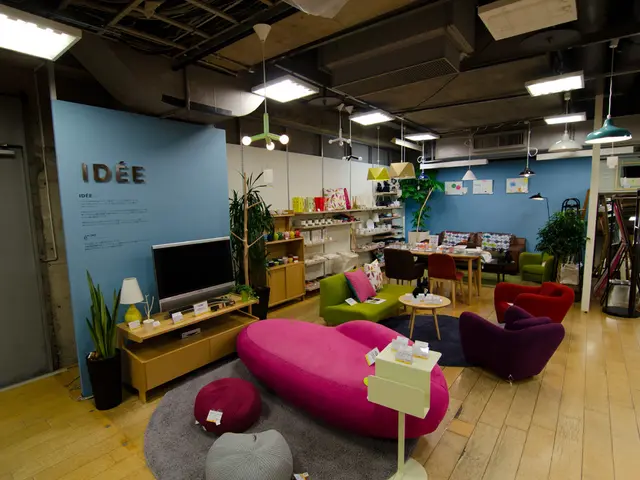A Peek at Bath & Body Works' Q1 Performance
Improved product offerings fuel Bath & Body Works' Q1 growth, despite a dip in candle sales
Here's a gist of Bath & Body Works' Q1 report:
- The brand's net sales remained almost unchanged, recording a slight dip of 0.9% year over year, reaching $1.4 billion.
- Loyalty members, approximately 37 million strong, accounted for an impressive 80% of U.S. sales.
- Gross margin experienced an expansion of 110 basis points, rising to 43.8%.
- Net income jumped 7.4% to $87 million, as per the company's press release.
Pivoting Away from Mall Culture
Bath & Body Works is gradually disentangling itself from mall-based retail, opening 15 new off-mall stores and shuttering 11 mall locations, mostly. More than half of its North American fleet now operates off-mall.
Diving Deeper: Q1 Insights
Despite a decline in unit market share for candles, Bath & Body Works is making headway in new categories. New product launches in haircare, men's grooming, and lip products contributed to growth during the quarter. The company has also extended its haircare line to all stores and intends to roll out its laundry supplies across the country this fall.
Although overall sales dipped slightly, they outperformed projections. Improved gross margin and a strengthening topline, along with a decrease in debt levels, have been praised as "encouraging" by analysts.
However, this is the third consecutive year that Q1 sales have slumped, according to market researchers. The continued erosion of sales could be indicative of increased competition from Amazon and other retailers, as well as customers shopping around and experimenting with new brands.
Despite Bath & Body Works' numerous strengths, such as its loyalty program and efforts to keep stores clean and inviting, analysts are concerned about management's lack of focus on external threats and the need to boost productivity. Some have even suggested a potential lack of retail expertise at the top level of management.
Taking a Look at the Broader Picture
Data from market research indicates that the luxury candle market, while not exclusively Bath & Body Works' domain, is booming. The market is growing at an 11.5% CAGR, reaching $166.3 million in 2024. This growth reflects consumer demand for premium, wellness-focused products, a segment where Bath & Body Works competes with luxury brands like Diptyque and Jo Malone.
consumers are becoming increasingly conscious of the environment and are shifting towards natural waxes, moving away from paraffin. This trend may put pressure on mass-market players like Bath & Body Works to adapt. Additionally, Amazon's competitive marketplace can intensify things by offering a broader distribution channel to smaller, eco-conscious brands and direct-to-consumer models.
- Amidst the pandemic, global data suggests a booming market for luxury candles, growing at an 11.5% CAGR, reaching $166.3 million in 2024, indicating a growing preference for premium, wellness-focused products.
- In the realm of research and artificial intelligence, analysts are exploring how AI can help Bath & Body Works sense market sentiments and adapt to the shift towards natural waxes, as consumers grow more conscious of the environment.
- As the fashion-and-beauty and home-and-garden markets evolve with a more sustainable focus, Bath & Body Works could potentially collaborate with AI to sensibly align its products with these changing lifestyle preferences, thus boosting sales.
- To remain competitive, Bath & Body Works might consider delving into cutting-edge research in the fields of AI and sustainable practices, especially given the billion-dollar market potential in the luxury candle sector.
- By boosting research and development in these areas, Bath & Body Works could ensure their continued success and resilience in the face of increasing competition from Amazon and other retailers, as well as the growing trend towards eco-friendliness among consumers.
- In the global markets, a billon-dollar opportunity awaits businesses like Bath & Body Works that can sensibly adapt to the changing consumer preferences and the growing importance of sustainable practices in the lifestyle, fashion-and-beauty, and home-and-garden sectors.




